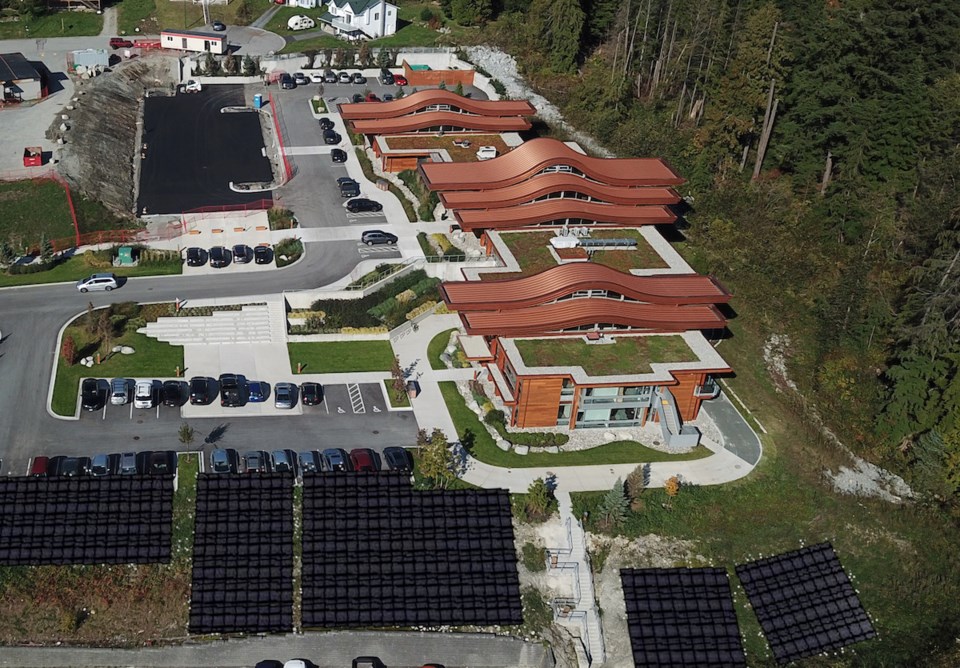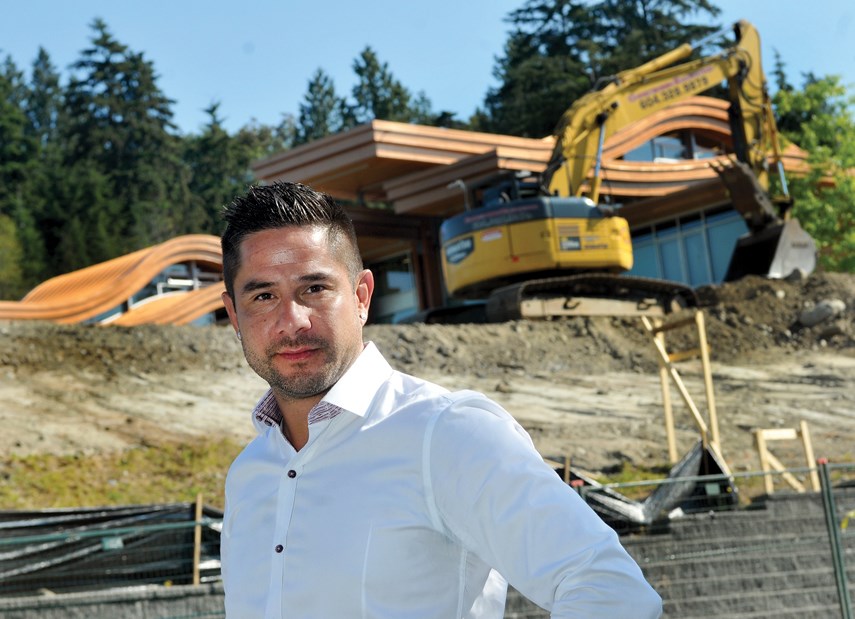Every time the sun comes out, Dennis Thomas-Whonoak will be smiling.
He knows that sunshine is the bringer of light — and the electricity needed to turn on the lights at the Tsleil-Waututh Nation’s administrative building in North Vancouver.
As senior business development manager with TWN Economic Development, Thomas-Whonoak is overseeing the construction of the North Shore’s largest solar project.
The 350 solar panels, clustered in large arrays, are hoped to supply all of the building’s electrical needs.
The initiative is part of the TWN’s commitment to reduce its carbon footprint. When it comes to generating as much power as it consumes, there wasn’t enough wind to make turbines feasible and tapping into the earth’s geo-thermal energy wasn’t an option because the administration building was already built. Harnessing the sun’s natural power offered a realm of possibilities.
The TWN started small with a solar project to power 90 per cent of its daycare centre’s electrical needs. As part of the plans for the new administration building, a south-facing slope was left empty for what would become the Lower Mainland’s largest ground-mount solar project.
“Indigenous peoples have always been stewards of the land,” says Thomas-Whonoak. “This uses modern technology to sustain our buildings, both economically and environmentally.”

He began working with Terratek Energy, based in Vancouver, to come up with a plan to use the most high-tech solar power systems. Phase one is construction — which started in early August and is hoped to be completed by the end of October — and phase two will include technology that reduces electrical consumption when the building isn’t in use.
One of the main challenges with solar energy is the inability to store excess power. So what about those short, rainy winter days when sunshine is in short supply and no energy is being generated?
The beauty of the plan, Thomas-Whonoak says, is that the TWN will be able to bank the solar credits it earns during the sunnier months to pay for the electricity it needs from BC Hydro in the winter.
It’s estimated that the TWN will be saving roughly $29,000 in annual electricity costs and that the panels will pay for themselves (but not the ancillary construction costs) in 12 years. The project’s total budget is around $600,000.
As important as for the administrative building to achieve zero-net energy, Thomas-Whonoak says that at a time when calls for climate action are intensifying, the TWN can help lead the way forward. He’s also excited about the project’s educational value for young people.
“We will be able to walk up a staircase and look directly into the middle of 350 solar panels and have the opportunity to talk to and educate our young ones about renewable energy and green energy initiatives,” he says.
In these COVID-19 times, access to the construction area is strictly limited and safety guidelines are being implemented.
Martha Perkins is the North Shore News’ Indigenous and civic affairs reporter. This reporting beat is made possible by the Local Journalism Initiative.



